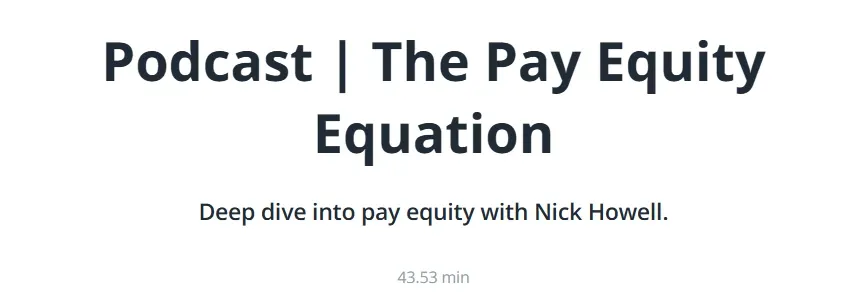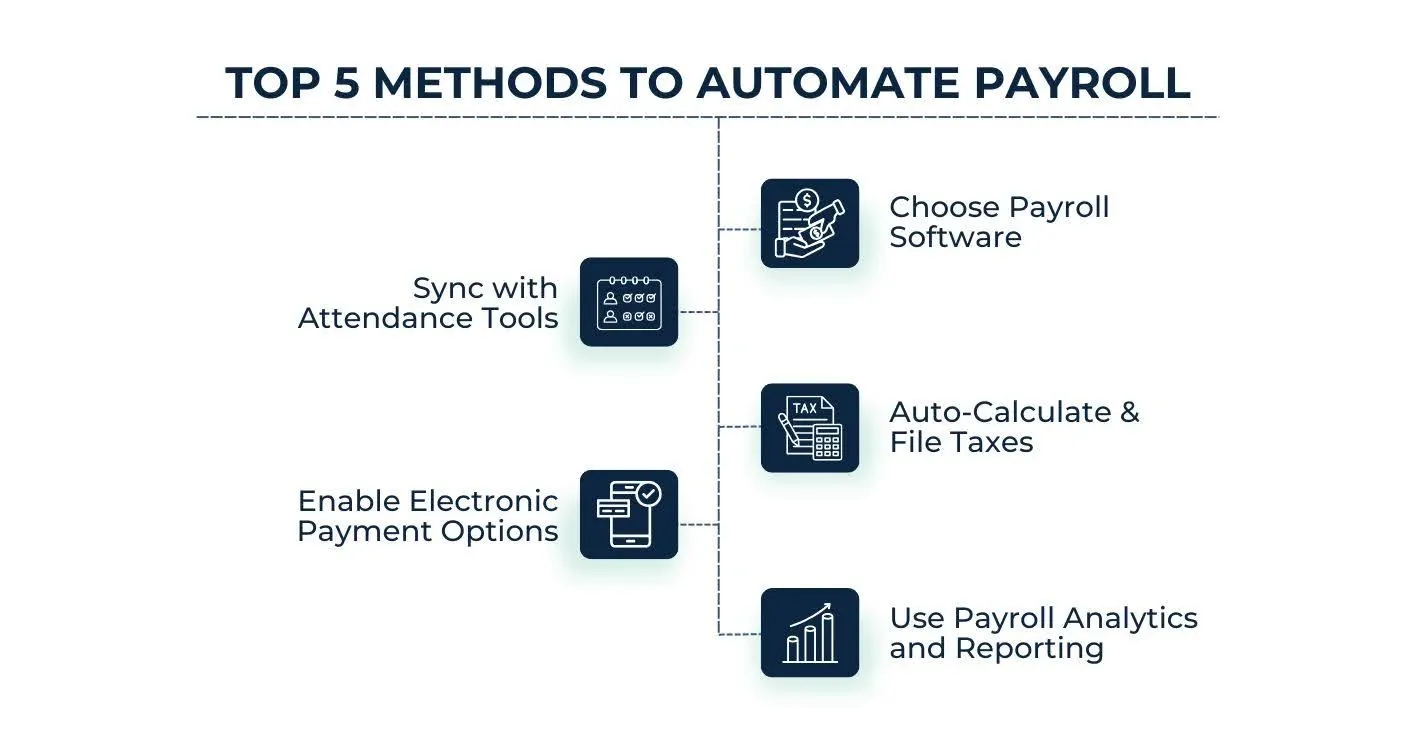
Payroll management is critical, yet prone to errors that can lead to costly consequences. Approximately 1 in 6 companies faced litigation due to payroll mistakes in the past year. These issues often stem from manual processes that are time-consuming and prone to human error.
An automated payroll system eliminates these risks by automating calculations, ensuring tax compliance, and facilitating timely payment distribution, thereby ensuring accuracy and timeliness. In this post, we will discuss the functionality of payroll automation and its key benefits, including the reduction of operational risks through automated payroll processes.
Key Takeaways
Payroll automation involves using HR software solutions to manage and execute payroll tasks with minimal manual input. This includes automating processes such as salary calculations, tax deductions, benefits administration, and payment distributions. These systems typically handle complex tasks, such as
By removing manual data entry, payroll automation significantly reduces the potential for human errors, ensuring that all pay-related calculations are accurate and compliant with relevant laws. This also enables greater scalability, as payroll processes can be managed more efficiently, even as the company expands.
Now, let’s look at the core features of an automated payroll system.
Suggested Read: Creating a Compensation Job Offer Letter: A Template Guide for Every Situation
Payroll automation systems come equipped with a variety of features designed to simplify and optimize payroll management. These features work together to reduce administrative burden, ensure compliance, and provide actionable insights.
Key features include:
The features of a payroll automation system integrate easily with Enterprise Compensation Management systems to ensure accurate, compliant, and efficient handling of salaries, bonuses, and other rewards at scale.
Now, let’s look at the core benefits these features can bring to your organization.

Suggested Podcast: Explore pay equity challenges and solutions in our latest podcast, “The Pay Equity Equation,” where Nick Howell shares practical strategies for reducing pay gaps across organizations.
Implementing payroll automation brings several advantages, both in terms of operational efficiency and risk management. Below are the key benefits for HR professionals:
Automation drastically reduces the time spent on manual data entry and payroll processing. By eliminating repetitive tasks, HR teams can focus on more strategic functions, such as employee engagement and talent development.
Automated systems minimize human errors in calculations, deductions, and compliance. This ensures employees are paid accurately and reduces the risk of costly payroll mistakes that could lead to litigation or penalties.
Reduces the need for outsourcing payroll or hiring additional personnel to manage payroll functions. This can result in significant savings for organizations, especially as you scale in your operations.
Payroll automation ensures that tax calculations and regulatory filings are always up-to-date with the latest legal requirements, minimizing the risk of non-compliance and penalties. Additionally, automated systems can generate detailed compliance reports, making it easier to track and audit payroll-related activities in real-time.
Timely and accurate payments increase employee trust and satisfaction. Automated systems also allow employees to access their pay slips and tax forms easily, improving transparency and communication.
Payroll automation can easily handle increases in employee headcount or multi-location operations. As the company grows, the system can manage more complex payroll structures without requiring additional administrative resources.
Now that we have covered the key features and benefits of payroll automation, let’s explore the best ways to get started.
Suggested Read: Exploring Key Metrics and Uses of HR Analytics for Beginners

Implementing payroll automation may seem like a big step, but by following a few strategic approaches, you can optimize your payroll process and set your team up for long-term success. Here are five essential steps to begin automating your payroll system.
Begin by evaluating and selecting payroll automation software that suits your organization's needs. Look for platforms that integrate with your existing HRIS (Human Resource Information System), accounting, and time-tracking tools. Key features to consider include tax compliance, scalability, and support for direct deposit and employee self-service.
Automate the synchronization between payroll and time-tracking systems to ensure accurate data collection. By connecting your payroll software with attendance and leave management systems, you can eliminate manual entry of hours worked, overtime, and leave balances. This contributes to error-free calculations.
Ensure that your payroll system includes automated tax calculation features to stay up-to-date with changing regulations. This can consist of federal, state, and local taxes, as well as deductions for benefits, retirement plans, and other withholdings. Automating these processes reduces the risk of compliance issues and minimizes manual work.
Set up direct deposit for all employees to automate the payment process, ensuring that employees are paid on time without the need for physical checks. Many payroll systems also allow employees to manage their payment preferences and access their pay slips through self-service portals, adding convenience and reducing administrative workload.
Utilize the reporting capabilities of payroll software to gain insights into payroll data. Automated systems can generate reports on payroll expenses, tax liabilities, employee compensation, and more. These reports help with strategic planning and also ensure compliance with audit and tax requirements.
While automation can significantly enhance efficiency, it comes with its own challenges. Let’s compare the risks of automated payroll versus manual payroll to help you make a more informed decision.
Suggested Read: Steps to Create a Fair and Equitable Compensation System
It’s important to understand the risks an automated payroll system introduces compared to manual payroll processes. This is how the risks of manual payroll can be mitigated by automation and where automation itself may introduce new considerations.
1. Human Error: Manual payroll is highly susceptible to human error, whether it's incorrect tax calculations, missed deductions, or salary miscalculations.
Automated payroll systems eliminate this risk by performing calculations consistently and accurately, reducing the chance of mistakes.
2. Time-Consuming: Processing payroll manually requires significant time and effort, particularly when calculating hours worked, applying deductions, and generating pay slips.
Automated systems drastically reduce the time spent on payroll by handling calculations, tax filings, and payments in a fraction of the time.
3. Compliance Risks: HR teams can easily miss updates or fail to apply the correct tax rates, leading to potential fines or legal issues.
Payroll automation ensures that systems are constantly updated with the latest regulations, ensuring compliance without the need for constant manual checks.
4. Scalability Challenges: HR teams can struggle to keep up with the growing workload, leading to delays or errors.
Automated payroll systems can easily scale to accommodate more employees and complex payroll structures without additional resources or administrative burden.
5. Lack of Transparency: Manual payroll systems often limit transparency, with employees having to rely on HR to resolve pay-related queries.
Automated payroll offers better transparency with employee self-service portals, where individuals can access pay slips, tax forms, and other payroll-related information at any time.
It is essential to weigh these risks carefully. Both methods require ongoing monitoring and adjustments to ensure smooth, efficient, and compliant payroll management.
Now that we have explored the benefits and risks of payroll automation, it’s time to focus on how to select the right system for your organization.
When choosing a payroll system, it's important to focus on features that cater to both your current needs and future growth requirements. Here are some key questions to consider when evaluating potential payroll automation solutions:
With numerous options available, choosing the right payroll automation solution requires careful consideration of your company’s unique needs and goals. CompUp’s suite of services perfectly complements payroll automation by enhancing the way organizations manage, communicate, and optimize compensation.
Let’s look at how CompUp helps organizations with payroll automation in the next section.
CompUp provides organizations with the tools needed to optimize pay structures, ensure fairness, and maintain transparency in compensation practices. You can simplify complex processes and make data-driven decisions to support your workforce effectively with this platform.
Key services include:
These features play a big role in ensuring accurate payroll processing while aligning compensation strategies with long-term organizational goals. CompUp can help you create a fair, transparent, and efficient payroll and rewards system within your organization.
Payroll automation is a big step towards improving operations, ensuring accuracy, and maximizing overall efficiency in compensation management. While manual payroll processes come with their own set of challenges, automated payroll systems offer significant improvements in terms of time-saving, error reduction, and compliance.
CompUp offers advanced tools for Compensation Bands, Budget Simulation, and Manager Execution, ensuring your reward strategy is both equitable and data-driven. In addition, their Fair and Transparent Compensation solutions and Digital Offer Experience help establish clear, transparent pay structures while attracting top talent.
If you are ready to take your payroll automation and compensation management to the next level, explore CompUp’s solutions today. Schedule a demo to discover how CompUp can transform your payroll processes.
1. What is payroll automation?
Payroll automation uses software to manage salary calculations, tax deductions, benefits, and payments with minimal manual input. It reduces errors and enables scalable, efficient payroll processes across organizations of any size.
2. How does a company benefit from having automated payroll?
Automated payroll reduces administrative workload, ensures accurate and timely payments, minimizes compliance risks, and provides detailed reporting. It allows HR teams to focus on strategic tasks while handling complex payroll structures as the company grows.
3. What are the benefits of using an automated payroll system compared to a manual system?
Automated systems eliminate manual errors, simplify tax filings, and save time by integrating with attendance and HRIS tools. Unlike manual processes, they scale effortlessly, ensure transparency, and support multi-location payroll with updated regulatory compliance.
4. What are the benefits of payroll software?
Payroll software simplifies salary processing, tax calculations, and compliance tracking. It offers e-payment options, self-service portals for employees, and advanced analytics. This allows for reducing costs, increasing accuracy, and supporting a transparent payroll experience.

Co-founder & CEO, CompUp
Anurag Dixit, founder of CompUp, is a seasoned expert in all things compensation and total rewards. With a deep understanding of the current compensation trends, his vision is to help companies create fair, transparent, and effective compensation strategies.
Revolutionizing Pay Strategies: Don't Miss Our Latest Blogs on Compensation Benchmarking